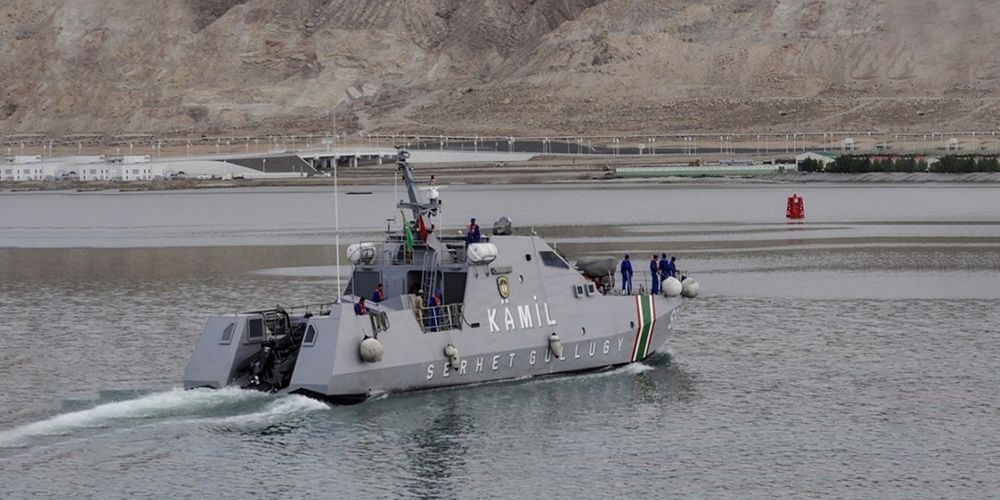Search

Publications
Turkmenistan Navy: qualitative development

In the eastern part of the Caspian Sea, nearby the new Karshi naval base, Navy and Coast Guard of Turkmenistan held a parade this year. Missile boats, patrol ship and patrol boats, and capabilities of marine special forces were demonstrated. The flagship of the Turkmen Navy, the corvette Deniz Han, took part in the parade.
Gurbanguly Berdymukhamedov is the founder of the Turkmen Navy
During the era of Turkmenbashi, Saparmurat Niyazov, the first president of independent Turkmenistan, Ashgabat had no naval forces at all. There was only a handful of Coast Guards. This was the case for several years after Niyazov's death. In 2008 there were 10 patrol boats of Russian and Ukrainian design 1400 and 1400M Grif, 14081 Saiga boat derived from the USSR Coast Guard fleet, one obsolete Point type boat, transferred from the US Coast Guard fleet, several Kalkan-M small boats built in Ukraine and the old well worn out former Soviet 1252 Korund base minesweeper. There was a marine battalion, but it had no landing craft. The main naval base, the port of Turkmenbashi (former Krasnovodsk), was under the operational control of the Border Guard Command.
The situation started to change when Gurbanguly Berdymukhamedov came to power in Turkmenistan. He led the country through many reforms that put it on a modern track. Among other things, Berdymukhamedov turned Ashkhabad toward the sea. It was clear to the new head of state that the country, located at the richest offshore oil and gas fields, simply must have strong navy.
In 2009, Gurbanguly Berdymukhamedov initiated a program to create a national naval force and to modernize the Coast Guard. As a matter of fact the Navy and the Voast Guard were to become a unified structure, consisting of a compact but effective fleet with fairly broad defensive and strike capabilities.
The same year two missile boats Gayratly («Bold») and Edermen («Valiant») of project 12418 «Lightning» with a total displacement of 580 tons and 40-knot maximum speed were ordered from Russia. They are armed with four quad-mounted anti-ship missile launchers «Uran-E» with a range of 130 km, 76-mm automatic universal artillery mount AK-176M and two six-barreled 30-mm AK-630M machine guns. Even nowadays these boats are second only to Project 21631 Buyan-M small missile ships of the Russian Caspian Flotilla in terms of their firepower in the area. When «Lightnings» joined the Turkmen Navy in 2011, Berdymukhamedov visited the ships. Later he went to sea on board the Gayratly missile boat for exercises.
Earlier, two patrol boats of project 12200 «Sobol» equipped with automatically controlled interceptors were built in the Russian Federation for the Coast Guard of Turkmenistan. They are capable of reaching speeds of up to 50 knots.
Building up power
Then Turkmenistan shifted its focus from Russia to Turkey with regard to fleet construction. The rapid development of the Turkish shipbuilding and military industry attracted the attention of many countries, especially because export products were offered at quite reasonable prices. Ankara was willing not only to supply ships and boats, but also to create enterprises in the customer's territory to assemble combat ships according to Turkish designs and out of Turkish components.
With the participation of the Turkish company Dearsan Shipyard, the shipbuilding and ship-repair plant of the State Border Guard of Turkmenistan in Ufra, near Turkmenbashi, was built and then deeply modernized. Ten large 400-ton, 57-meter NTPB (New Type Patrol Boat) missile-artillery boats were assembled there, based on Turkish Tuzla patrol ships with a maximum speed of 25 knots and a range of 1,000 miles. On the superstructure they are equipped with two dual-package Italian Otomat Mk 2 anti-ship missile launchers with a range of up to 180 km and 210 kg fragmentation and shaped charge warheads or the same number of compact Marte Mk 2/N Sea Killer anti-ship missiles with a 70-kg warhead and a range of 30 km. The boats are also armed with Italian twin 40 mm Oto Melara Twin Compact turret artillery mounts, two Turkish 25 mm Aselsan STOR remote-controlled automatic guns and two SIMBAD-RC SAMs with a range of up to 6.5 km and the Roketsan multi-barrel depth-charge projector. The boats are equipped with Thales Variant 2D radars.
The lead border patrol ship of the NTPB type was named Arkadag, that is, «Patron». Which is one of the official titles that Gurbanguly Berdymukhamedov holds.
NTPB type boats in the Coast Guard are usually not armed with missiles. But it can be installed in a short time if necessary.
The Ufra shipyard also assembled six FIB/FAC 33 small 33-meter missile boats, capable of reaching speeds of 35 knots, with the help of Turkish experts and out of Turkish components for the Coast Guard of Turkmenistan. They are armed with two or four Marte Mk 2/N anti-ship missile launchers and Aselsan STOP, 25 mm remotely-operated artillery system on the bow.
With the support of Dearsan Shipyard ten small 15 meter long patrol boats of AMV («Bars-12») type, landing boats and a hydrographic vessel, which can perform tasks of a reconnaissance ship, were built for the Coast Guard of Turkmenistan.
On August 11, 2021, the corvette Deniz Han was commissioned into the Turkmen Navy. It became the largest combat vessel in the Turkmen navy. Its length is 92 m . Its armament includes eight Otomat Mk 2 anti-ship missile launchers, a vertical launcher of the MBDA VL MICA air defense missile system with a range of up to 20 km against air targets at altitudes up to 9 km, a 76-mm Italian Leonardo Super Rapid multi-purpose artillery system, Aselsan Gokdeniz 35 mm twin barrel anti-aircraft artillery system, two or four small caliber remote-controlled artillery mounts, Roketsan ASRLS 196 mm six-barrel antisubmarine rocket launcher and two three-tube 324 mm anti-submarine torpedo launchers. The ship is fitted with a helipad to accommodate a helicopter, and a small hangar accommodates an unmanned aerial vehicle capable of performing reconnaissance and strike functions.
The corvette Deniz Han was then again assembled at the shipyard in Ufra using Turkish components.
A foreign policy tool
A new naval base in Karshi, south of the entry to the Gulf of Kara-Bogaz-Gol and north of Turkmenbashi, was created for naval ships and commissioned in 2021. It was there where a spectacular parade was held, demonstrating Turkmenistan's outstanding achievements in building its Navy and Goast Guard, bringing it from the fifth last place in the Caspian region to the first place. This event also paid tribute to Gurbanguly Berdymukhamedov, the main ideologist and builder of the fleet, who, having passed the presidency to his son Serdar Berdymukhamedov, became the chairman of the upper house of parliament.
Ashgabat intends to continue developing its fleet. And the country is very strong in the area. It suffices to say that the ships and boats of Turkmenistan today can deploy 32 Kh-35E anti-ship missiles, 48 Otomat Mk 2 and 12-24 Marte Mk 2/N anti-ship missiles (depending on the number of launchers installed on each boat). In other words, their total ammunition is 92-104 full-fledged anti-ship missiles, some of which are capable of engaging coastal targets. For comparison, the number of missile launchers of the Caspian Flotilla of the Russian Navy is 44 units, however Russian ships can solve not only tactical and operational tasks, but also strategic ones.
Dipping into the future
The development of Turkmenistan's navy is unlikely to stop at this point. In our opinion, it will go in the direction of qualitative rather than quantitative strengthening of the navy.
According to a number of sources, a second corvette of the improved Deniz Han type is now under construction. The enhanced displacement ship will have more advanced detection, target designation and combat control equipment, as well as more powerful weapons. There is a good chance that corvette will be armed with Turkish Atmaca («Hawk») anti-ship missiles with an effective range of more than 200 km. These anti-ship missiles are capable of striking not only maritime targets, but also coastal ones. Turkish Hisar («Fortress») short-, medium- and long-range SAMs are likely to be used as the main air/missile defense weapon, which will be fired from a vertical MDAS launcher, also Turkish-made. The ship will be fitted with a helicopter hangar for permanent deployment.
Another notable feature of the NTPB type ships, both combat ships and the ones assigned to the Coast Guard of Turkmenistan, was the deployment of Roketsan 196mm six-barrel antisubmarine rocket launchers. They can be used to destroy not only fighting underwater swimmers and their means of transportation, but also diesel-electric submarines, especially in coastal waters. Therefore, Ashkhabad does not rule out the appearance of Iranian submarines in the Caspian Sea. In any case, Iran is already capable of transferring by road from the coast of the Persian Gulf to the Caspian midget Ghadir type diesel-electric submarines with a submerged displacement of 125 tons, length 29 m, width 9 m. They travel underwater at eight knots. Armament consists of two torpedo tubes that can launch 533-mm torpedoes and Jask-2 anti-ship missiles, as well as lay mines
Appearance of two three-tube 324-mm NATO-standard anti-submarine torpedo tubes on the Deniz Han corvette, which are concealed on both board sides behind side port door under the helicopter pad, shows that the command of the Turkmen Navy takes a very serious view of the submarine threat. It can be assumed that Ashgabat itself would not mind acquiring submarines, given the depths in the southern part of the Caspian Sea (from 208 to 1025 meters) are suitable for the use of small diesel-electric submarines.
Apparently, the command of the Turkmen Navy is considering Turkish STM500 type diesel-electric submarine very seriously. Such a lead submarine is currently under construction for the Turkish Navy. Its submerged displacement is 540 tons, length Ц 42 m, maximum beam Ц 8.5 m, cruising speed Ц 5 knots, and the maximum surface speed Ц 18 knots. The submarine with a crew of 18 personnel will dive to a depth of 250 m, the cruising range Ц 3500 miles, sea endurance Ц 30 days. There are plans to equip the STM500 with an up-to-date hydroacoustic system, an optronic periscope, an electronic warfare antenna, and an automated combat control system. The armament will include eight heavy 533-mm torpedoes and four anti-ship missiles. The submarine will accommodate six special forces troops.
STM500 project submarines are best suited for operations in the Caspian Sea and can be assembled at the shipyard in Ufra. In the future, these submarines are supposed to be equipped with air-independent propulsion power plants or high-capacity lithium-ion batteries, which will make it possible to significantly increase the submarine submerged endurance.
It is clear that the Navy and the Coast Guard of Turkmenistan will modernize existing ships and boats, outfitting them with more advanced electronic equipment and weapons. And obsolete combat units with expired service life will be replaced by new, more advanced counterparts.
However, the Turkmen Navy also has an Achilles' heel. There are no mine countermeasures ships in the Navy. There are none Ц neither old nor new, neither big nor small. This is an obvious overlook. Meanwhile, as the special military operation in Ukraine has shown, mines remain a serious threat at sea. And the Caspian Sea is no exception here.







